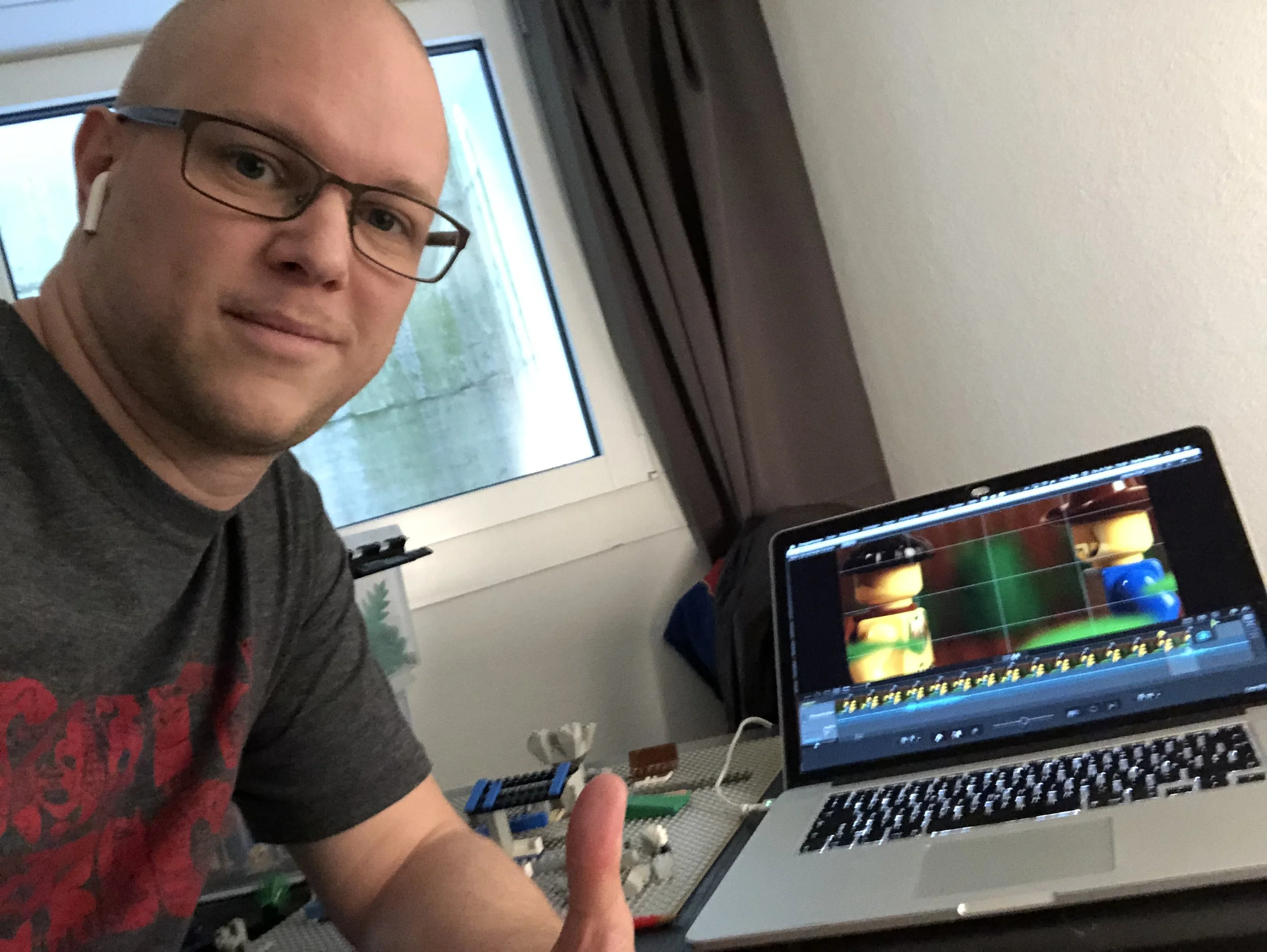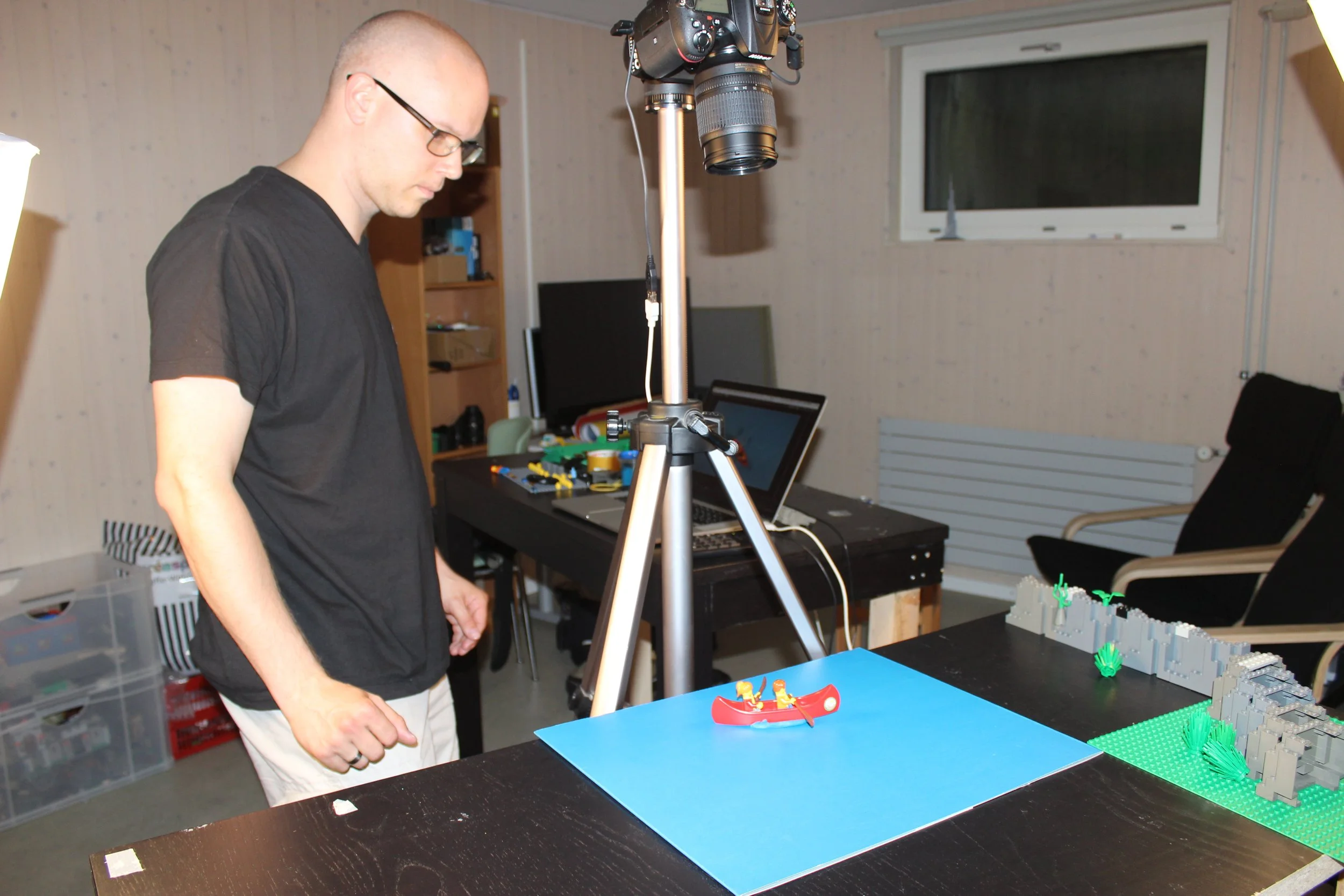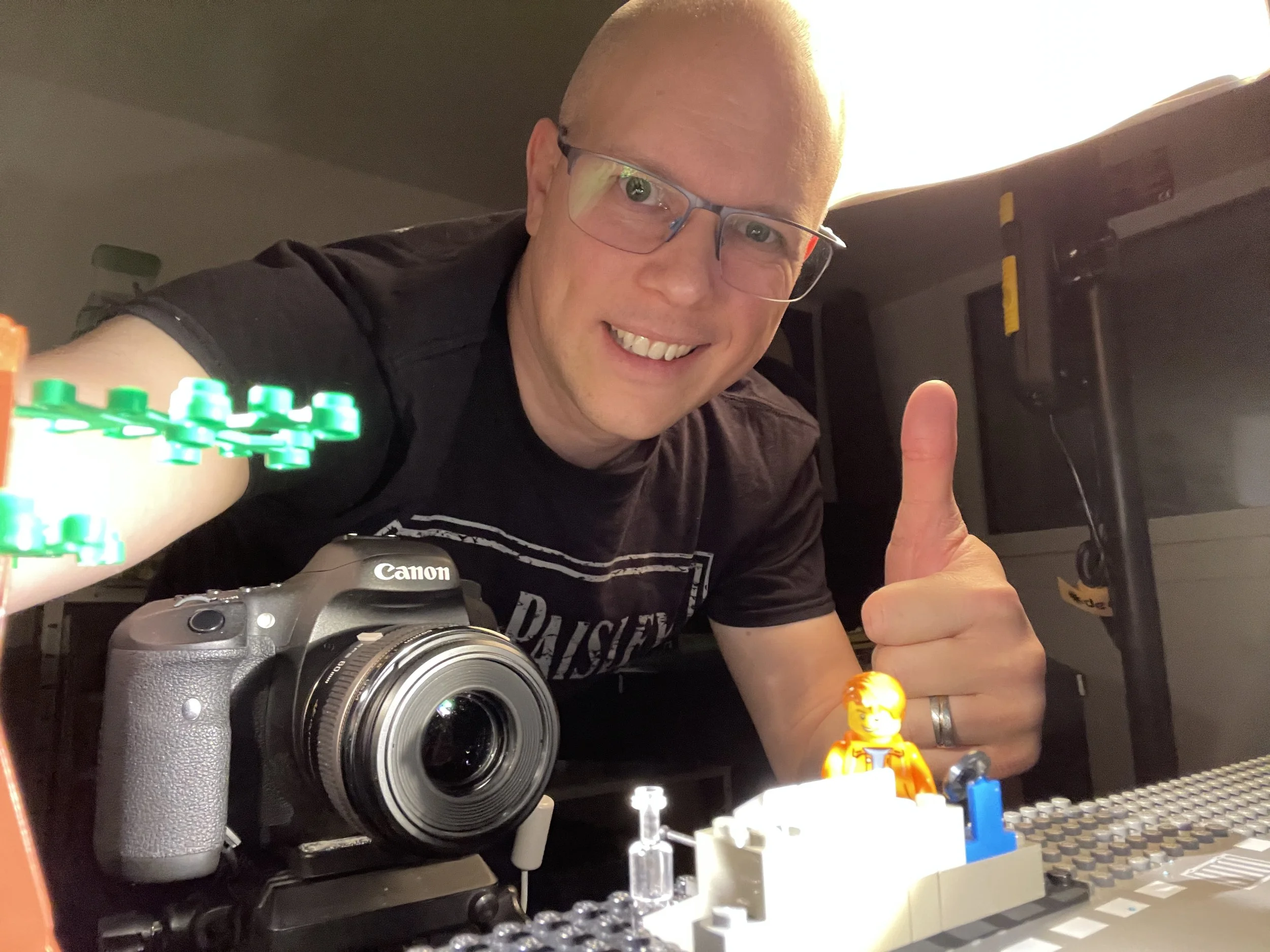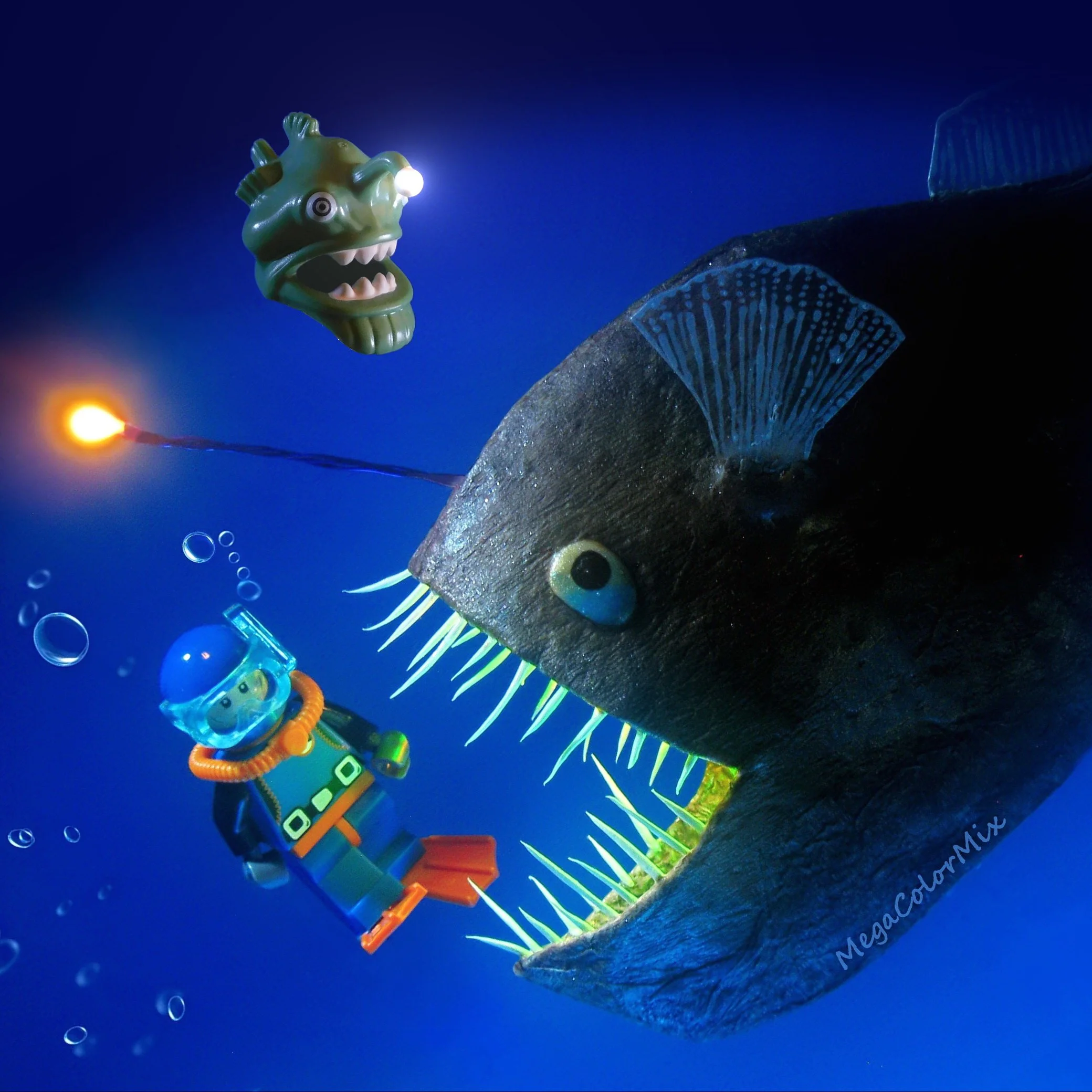Out of Service: The Making of a Moving Brickfilm
/Best of BrickNerd - Article originally published August 26, 2022.
Today’s guest article comes from Brickfilmer and Brickworld Chicago Cinema Co-coordinator Casey McCoy. He interviews Stefan Minder about his short film “Out of Service” which was recently recognized as the best international brickfilm at Brickworld Chicago 2022.
Every year in Schaumburg, Illinois, hundreds of LEGO fans descend on the Chicago suburb for one of the largest and most celebrated LEGO fan events – Brickworld Chicago. It’s been the highlight of my LEGO experience for the past 10 years and many others’ for good reason – the sheer variety of things to do, people to meet, and MOCs to see! But one of my favorite activities has stood above the rest – the Brickworld Film Festival.
Starting in 2011 and founded by animation giants David Pagano (paganomation) and David Pickett (Nightly News at Nine/ Brick 101), the Brickworld Film Festival has always been a highlight of the show for me (especially having entered four years in a row). With the keys being handed down to the next generation, Tyler Eyerly and I ran the Brickworld Chicago Film Festival for its 9th consecutive screening this year. The film festival was previously restricted to attendees only but went international in 2017 with a category opening it up for Brickfilmers around the world. This year, the Brickworld Film Festival received entries from the United States, Switzerland, Germany, France, and other countries.
This year's winner in the international category was "Out of Service" by Stefan Minder (hirschundelch), an AFOL and Brickfilmer from Basel, Switzerland. The film covers the experience of a woman in a wheelchair in her struggles to make it on time to an important appointment. The film really sets a mood and tone well with simple pacing and storytelling that struck a chord with the film festival audience. I highly recommend watching the three-minute film included below before continuing on through this article. It is well worth your time.
I sat down with Stefan to hear more about his journey as a Brickfilmer and how he made this award-winning film.
Casey McCoy: Thanks for taking the time to talk, Stefan. Let's start with a little bit about who you are – what's your background, how did you get started with LEGO, and how did you get into stop-motion animation?
Stefan Minder: I was born and raised in Switzerland near the city of Basel and have lived in that area ever since. When I was in middle school, we had a project week, where you could choose a course from a selected list of subjects. You would then spend the week learning about and working on the selected subject. The year before, Jurassic Park came out and I was starting to become a big movie fan because of it. Therefore, I selected the video and film course. We had to split up into groups and each group received a VHS-C video camera. The task was to make two short films. The camera we were given had the option to film just one-quarter of a second. You pressed the record button and the camera automatically recorded one-quarter of a second only and then stopped. (Although by now I'm pretty sure it was more than a quarter of a second, but still…)
I never consciously knew about stop-motion or specifically cared about it, but for some reason, I wanted to use that camera option and make an animated movie. The only "puppets" and sets we had available at short notice were our LEGO sets and minifigures. Fortunately, the others in my group were all for it, so I made my first brickfilm in that week. I don't remember what it was about, but I have the feeling some destruction was part of the story.
After that, I was hooked. I saved money to buy my own video camera and started doing movie by movie. I still have most of them. However, compared to the brickfilms I make today, these were very bad and embarrassing. But every time I watch one of them, it makes me proud to see how much I evolved and improved since then. The course not only introduced me to brickfilming, but I also met one of my best friends there. We made brickfilms together for years and we still are best friends up to this day (despite spending long hours cramped together in a small room doing stop-motion).
Casey: Let's talk a little bit about that journey of getting from where you were to now. In any discipline, the first step to getting good at something is being bad (usually). I can think back to my first animations (or MOCs) and can relate – I don't even want to look at them. What was that process like for developing your craft? And did this involve a dark age at all?
Stefan: As mentioned, I went on to make a lot of movies with the VHS-C camera. And one day, LEGO released the Studios sets that included a webcam and stop-motion software. That was a huge step up. I could finally see on a screen what I was doing, which was not the case with the video camera. If I remember correctly, the software even had an onion-skin function (comparing the current frame with the last). With the LEGO Studios set, we made what I call our first real brickfilm, “Undercover Cowboy.”
It was our first scripted film, had much better sets that we built ourselves, much better camera angles and lighting and even voice actors (in German) and original music that I composed. The film is 20 minutes long and took us more than two years to make. Unfortunately, the resolution of the webcam was very bad, which is why it didn’t age so well. After that, my friend did not want to animate anymore so I was left alone, not really knowing what to do with myself. I took a break for a few years and started doing other things.
One day, I bought a book called “Cracking Animation” about the story of the Aardman Studios (Wallace & Gromit, Chicken Run, Shaun the Sheep etc.). It also included instructions for making your own stop-motion film. It was thanks to this book that I learned about stop-motion software that you can use at home. So, I bought the software iStopMotion and was blown away by how much easier it is to animate. At that time, I used a digital video camera with manual settings that I could hook up to the computer and the software. It was heaven.
I made a movie called “Romartino & Juliastrid” for the wedding of my sister, which is—you guessed it—a spin on the Romeo and Juliet story. It was okay and funny, but compared to my current brickfilms, it was still lacking quality in all areas.
Unfortunately, I did not have any ideas on what to do next, so again, I didn’t animate anything for a while. This changed when I started an education in web and media design. I learned how to work a DSLR camera, how to use Adobe After Effects, Photoshop, Premiere and Cinema 4D. So many things I always wanted to know about. At the same time, I started reading up on animation techniques, scriptwriting (which in my opinion is one of the most important parts), lighting and the animation process in general. I also started watching more and more other brickfilms and YouTube tutorials which was extremely helpful. The brickfilm community is absolutely amazing.
During this time, my good friend Olivier, who already helped with some scenes on Undercover Cowboy, got married and asked me to make a brickfilm for the wedding. This ended up being my brickfilm “Never Say Good-bye” and was the kickoff to the journey I’m on now. It was the first time I used a DSLR camera with Dragonframe software and the first time I added minor visual effects and photoshop compositions. That was the moment I realized that my skillset had changed and that I was able to do almost anything helped by modern technology.
Suddenly I had a lot of ideas, starting with the GONE CAMPING series and the Christmas brickfilm “Making Christmas” (which was actually a dare by my brother-in-law) and the ideas have not stopped. Quite the opposite: I still have four finished scripts, one draft of a script, and two outlines lying on my desk, waiting to be animated. With every movie I try to improve in some way and, so far, I think I succeeded. I’m at a point now where I write a scene without thinking about how to do it because I know that I will figure it out along the way.
Casey: Let's turn our attention to the film in question – Out of Service. Once again, congratulations on being chosen by the Brickworld attendees. Can you talk a little bit about how this project came to be? What inspired you? What were any major roadblocks or hurdles while working on it?
Stefan: Funny enough, the inspiration for this movie was the LEGO set that I used in the film (60154 Bus Station). I saw the set and the wheelchair that was part of it and I immediately thought about a situation that somebody in a wheelchair probably experiences on a daily basis: What if you have to get on a bus, but there’s not enough space? I didn't think that the passengers would get off or get out of the way to make that space. It’s really sad but unfortunately this happens all the time.
So, I had the basic conflict of the story. The next question was – what would happen then and how should the conflict resolve? After tossing around several ideas (including somebody allowing her to hang on to his car) I stumbled over a news article about a bus driver in Paris who put his bus "out of service" to get rid of the passengers in order to make space for a person in a wheelchair who was not able to get on. I thought this was a wonderful story and absolutely perfect.
There were a lot of firsts for me with this movie. I never did face animation before, only swapping heads. The animation of the passenger's eyes was a big undertaking in post-production. I filmed all the passengers without faces and added all eyes and movements in post. But it was absolutely worth it. It was also the first time I had rain in a brickfilm. For some reason, I first used water from a glass and flicked it on the set with my fingers, which did not look very good and took up more time than I wanted. It was only after a while that I started using a water spray which made smaller drops and was much easier and faster to use (why I didn’t think of that from the start, I really don’t know).
But the most difficult part was that this movie had a totally different style compared to my other brickfilms. My other films are bright and funny. That’s just what I do naturally. But this one was darker and much more serious. It was very difficult for me to pull that through, especially with the music that had to be way calmer than usual.
Casey: That's a great transition – in the description of Out of Service, it says you also composed and arranged the music. Where did your background in music come from? How do you approach writing the music for a film and how early in the process do you start working on it?
Stefan: I have been a huge fan of film music for at least 20 years. I’m the proud owner of a huge collection of soundtracks and am even part of the editorial team of the only German magazine about film music. I always wanted to write film music myself and my brickfilms give me to opportunity to do just that.
I usually have the first ideas about the music when I write the script—what it should sound like, the style and maybe some instruments that will be used. I can just hear it in my mind and feel it. I don’t know much about music theory so my music always comes from my mind and heart. For example, I knew from the start, that I wanted the music for “Out of Service” to be a waltz (rolling along almost like the wheels of a wheelchair) and there had to be an accordion involved somehow to get a connection to Paris, France, where the original story took place (cliché, I know). From there I tried some things until I landed with this jazzy ensemble waltz with upright bass, piano, accordion, and solo violin. There are also some clarinets involved. I consciously avoided any brass instruments to keep the music soft and emotional.
Then I tried to arrange it so it supports and improves the film. For example, when the first bus arrives, the doors open, and it’s clear that there is no space, the waltz’s downbeat is not always where it should be. The waltz is broken to symbolize the disappointment of the character. Also, when the second bus arrives, the waltz gets faster and faster to support the anticipation of the character up until the moment when the bus door opens and everything falls apart, once again. These are just two examples of how I tried to use the music to improve the story.
As for my musical background, when I was young, I learned to play the drums in music school (and I like to think that I was pretty good at it). I played in several orchestras in my free time and learned a lot about how instruments work, and how they are played and used within an orchestra. I also tried to teach myself the piano. Unfortunately, I am not very good at it but it’s enough to find and press the keys (or chords) that I need.
What little I know about music theory, arranging, orchestration, etc. I taught myself, remember from music class in school, or learned from a friend who was kind and patient enough to explain things to me. Techniques of film music I learned from endless hours of listening and analyzing film music or from reading and listening to interviews with composers. It’s amazing how much you can learn.
Casey: Do you stay active/involved in any online or in-person communities for either brickfilming or LEGO? What's your go-to?
Stefan: I try and want to be more active but unfortunately it takes a lot of time that I just don’t have. I am part of many Brickfilmer Facebook groups, which is probably where I am most active. But I also spend some time on Brickfilms.com, Bricks in Motion, Brick à Brack, and the German Brickboard. It’s amazing how much you can learn from all those people and how helpful they are. They’re rarely toxic but always encouraging. The Brickfilmer community is very special. It feels good to be a part of it and to always have a place where I can ask questions and get answers.
I don’t have many options for in-person communities, but I like to go to the Fana’Briques exhibition in Colmar, France which takes place every year (except for the last two years). It's not far from my home, fun, inspiring and they usually show one or two of my movies.
Casey: Lastly, what advice would you give to someone who's just getting started or interested in brickfilming?
Stefan: Start small and grow. Watch other brickfilms and tutorials and learn from them. Ask other Brickfilmers if you want to know something. They will be happy to help you. Try to improve with every film. Don’t be blinded by professional and expensive equipment—you can shoot a great film with your phone or a webcam that costs $30 if you want to. You can always get bigger later. And for me very important: learn the basics. For example, storytelling, screenwriting, animation and camera techniques. Without a good story that is well told, without the right animation or a good camera angle, your films will always be missing something. And most importantly, have fun!
Casey: Awesome, thank you so much, Stefan!
Have you ever made a stop motion brickfilm using minifigures? Let us know in the comments!
Do you want to help BrickNerd continue publishing articles like this one? Become a top patron like Charlie Stephens, Marc & Liz Puleo, Paige Mueller, Rob Klingberg from Brickstuff, John & Joshua Hanlon from Beyond the Brick, Megan Lum, Andy Price, John A., Lukas Kurth from StoneWars, Wayne Tyler, LeAnna Taylor, Monica Innis, and Dan Church to show your support, get early access, exclusive swag and more.






























